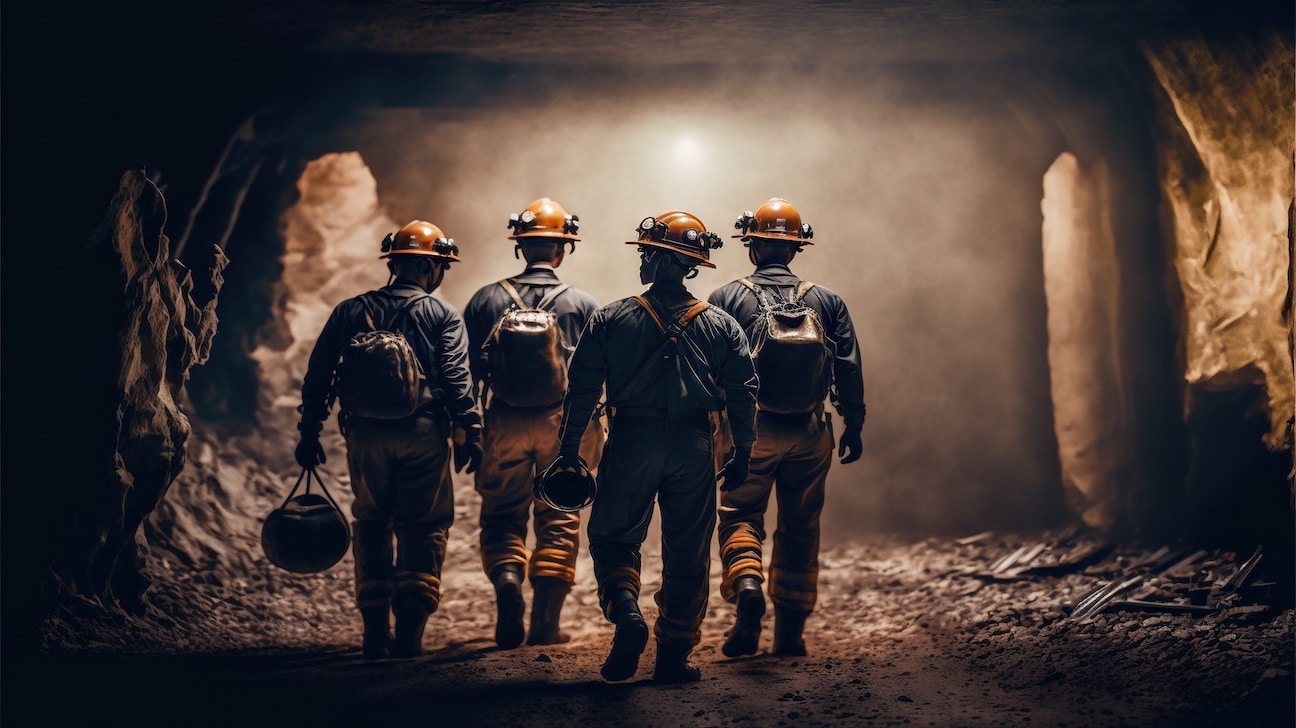
Working as a miner is one of the most physically demanding, labor-intensive jobs out there. Miners operate in conditions that are among the most dangerous work environments worldwide.
About 300,000 workers make up the coal mining industry in America. High heat, claustrophobia, dangerous gasses, and the threat of explosion are among the realities that miners face day to day.
In addition to working in hazardous conditions, miners have among the highest rates of substance abuse.
Overall, 11.8% of miners have addiction issues, nearly double that of the general population (6%).
Rate Of Addiction Among Mine Workers
Miners experience the highest rate of alcohol abuse among workers in all industries. Heavy alcohol use among miners (17.5%) is nearly three times that of the general population (7%).
Alcohol consumption has long been a concern in the mining sector. Mining is male-dominated, which demographically contributes to the high prevalence.
Mine workers also have a high rate of illegal drug use compared to other industries (5%). Transient miners face a higher risk of drug addiction than stable, full-time workers.
Miners And Opioid Abuse
Due to the physically demanding nature of coal mining, miners suffer more injuries than workers in other industries. As a result, some miners are issued prescription painkillers for pain management.
The longer a person is prescribed opioid painkillers, the higher their risk of dependency. Approximately 1% of miners have a prescription opioid addiction.
Opioid abuse among this cohort is lower than the general population (3.8%). However, miners also have a higher rate of opioid-related overdoses than other industries.
| Type Of Drug Use | Rate Of Addiction | Trend |
|---|---|---|
| Alcohol Use | 17.5% | Consistent |
| Illicit Drug Use | 5% | Cannabis is the most used illicit drug |
| Prescription Drug Abuse | 1% | Consistent with opioids being the most commonly abused |
Signs Of Addiction In Miners
When a person is abusing drugs or alcohol, there are usually telltale physical and/or behavioral signs. These signs may be more or less obvious depending on the extent of substance use.
Common signs of a substance use disorder (SUD) include:
- bloodshot or glossy eyes
- eyes with pupils that are oversized or pinhole-sized
- shakiness or tremors
- sudden weight loss or weight gain
- sporadic changes in mood, e.g., anxiety, paranoia, irritability, hypervigilance
- shifting between hyperactivity and low energy
- increased isolation
- decreased regard for personal appearance and/or hygiene
There are also signs of substance abuse that are specific to the workplace.
Common signs of substance abuse among mine workers include:
- lower productivity
- poor memory recall
- disorientation
- impulsive decision-making
- increased and/or unexplained absenteeism
- increased rate of on-the-job accidents
- disregard for personal safety and the safety of others
Possible Risk Factors For Addiction Among Miners
Miners have unique working conditions compared to other industries. Their schedules are intense, the job conditions can be unpredictable, and the demands are high.
High Stress
Mining is a high-stakes job; one small mistake can put every coworker in jeopardy. High stakes can equate to high stress for those who work in mines. Stress can then lead to self-medication or substance abuse.
Miners must acclimate to dangerous working conditions that include heavy equipment, toxic substances, high temperatures, and explosion risks, and practice mine safety at all times.
In addition, miners are also accustomed to working long hours. Most miners work shift schedules that are divided into two-week-long shifts, and up to 12-hour-long days.
Physical Demands
Mining is one of the most physically demanding jobs out there. The constant strain on the body results in pain and injuries, some of which can affect quality of life.
Due to the labor-intensive conditions, miners experience higher rates of injuries compared to workers in other industries. As a result, some of them may use drugs or alcohol to alleviate pain.
Isolation
Miners aren’t able to complete their jobs at desks like 80% of American workers do. These workers must travel to where the mines are located, which oftentimes is far from home.
Miners can be separated from friends and family for long periods, sometimes more than a few months. Mines are usually located in remote areas and workers live in small communities.
Small mining communities are typically void of entertainment. As a result, miners may experience boredom, which can increase drug and alcohol use and alcohol dependence as a way to pass the time.
Mental Health Issues
The mining environment has a known effect on mental health. Related problems include mental fatigue, sleep disorders, depression, and anxiety.
Being faced with the risk of devastating injury or sudden death places miners in a constant state of anxiety. Living and working in isolated conditions can stir feelings of loneliness and despair.
Physical Health Problems
There are many health conditions that miners can experience as a direct result of their job. Many of these conditions are serious and can have critical effects on quality of life.
Some of the health conditions associated with a career in the mining industry include:
- respiratory illnesses
- heart disease
- musculoskeletal disorders
- altitude sickness
- pulmonary edema (excess fluid in the lungs)
- lung and prostate cancer
- lung disease
Risks Associated With Mine Workers And Substance Abuse
Addiction poses a threat to workers in any field, but miners face an especially high risk. In a job where a small workplace accident can lead to catastrophe and fatalities, impairment is a major hazard.
Miners operate heavy equipment in confined areas, often in high temperatures and under other stress. The associated risk is already high, and substance impairment poses a major liability.
Supporting People In The Mining Industry With Addiction Issues
To combat drug and alcohol abuse, many U.S. mining companies have enforced zero-tolerance policies. Although this may help to decrease drug use, it doesn’t affect alcohol use when miners are off the job.
Nonetheless, companies can do their part by maintaining an effective drug and alcohol policy. Companies can also continue to enforce regular drug testing.
Employee-assistance programs can support employees with addiction issues. Many miners are part of a union, and union-based prevention, addiction treatment, and recovery programs are on the rise.
The Americans with Disabilities Act (ADA) offers some protection so that a person can’t be fired for having an addiction. However, in a field like mining, the risks are palpable.
The National Institute for Occupational Safety and Health (NIOSH) established the Minor Health Program (MHP) to improve the well-being of miners. MHP works to provide miners with free healthcare resources regarding substance abuse treatment.
Find Freedom From Addiction
Active addiction can feel debilitating, but there’s a way out. If you or a loved one is dealing with substance abuse, contact DetoxRehabs.net to get connected with a treatment center today.
Article Sources- Centers For Disease Control And Prevention (CDC) – Morbidity And Mortality Weekly Report (MMWR)
https://www.cdc.gov/mmwr/volumes/69/wr/mm6903a1.htm - Centers For Disease Control And Prevention (CDC) – NIOSH Minor Health Program Addresses Substance Abuse And Work
https://blogs.cdc.gov/niosh-science-blog/2022/08/31/miner-sud/ - Industrial Health – Mental Health In Mine Workers: A Literature Review
https://www.ncbi.nlm.nih.gov/pmc/articles/PMC8655752/ - New York State Office Of Addiction Services And Supports – Substance Use Disorder Warning Signs
https://oasas.ny.gov/warning-signs - Substance Abuse And Mental Health Services Administration (SAMHSA) – Substance Abuse And Substance Use Disorder By Industry
https://www.samhsa.gov/data/sites/default/files/report_1959/ShortReport-1959.pdf


